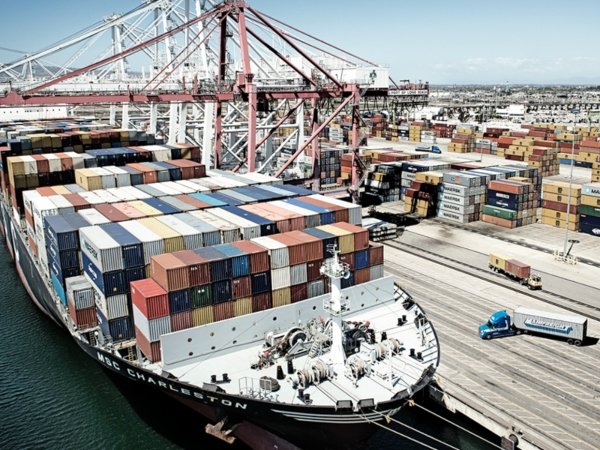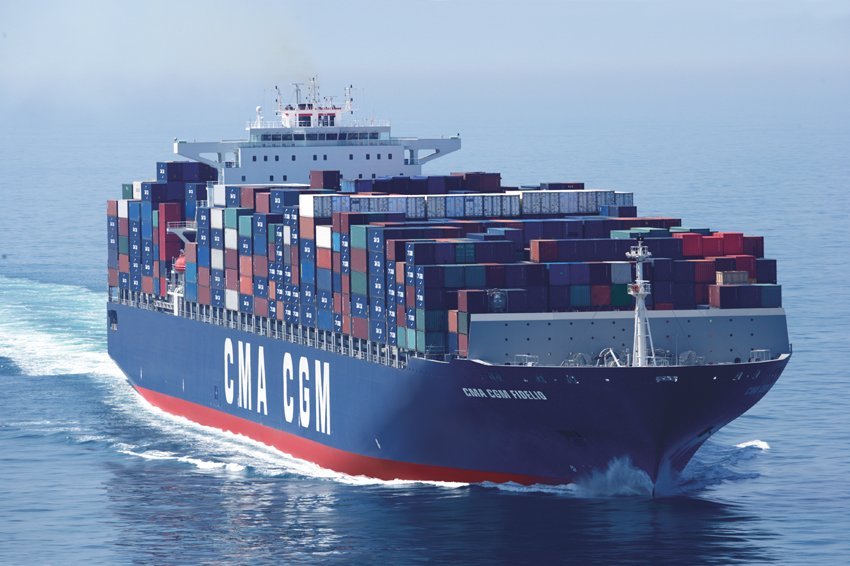Key takeaways
- Freight Consolidation Provides Economies of Scale: By combining smaller LCL (less-than-container-load) shipments from multiple shippers into a full container, freight consolidation allows carriers to realize economies of scale and pass on cost savings to the shippers.
- Increased Negotiating Power: When shippers combine their freight through a consolidator, they gain increased negotiating power with carriers. The consolidated volume gives the shippers more leverage to negotiate better rates and terms.
- Reduced Transit Times: Freight consolidation can reduce transit times by avoiding the need to assemble and disassemble partial truckloads at multiple stops. The direct full container moves are more efficient.
- Improved Reliability: Consolidating LCL shipments into a full container load reduces the risk of delays, damage, and loss compared to moving many small shipments independently.
- Access to More Carrier Options: Consolidators have relationships with a wide network of carriers, allowing shippers to access more transportation options and routes than they could negotiate individually.
- Simplified Logistics Management: Shippers can outsource the complexities of arranging LCL moves, documentation, and tracking to the consolidator, streamlining their supply chain operations.

Freight consolidation has become a popular solution for businesses looking to optimize their logistics operations and reduce costs. In this blog post, we will explore how freight consolidation affects the negotiation of rates for Less than Container Load (LCL) shipments. By understanding the dynamics of LCL shipments and the advantages of freight consolidation, businesses can make informed decisions to optimize their supply chain and drive cost savings.
1. Understanding LCL Shipments:
LCL shipments refer to the transportation of goods that do not fill an entire shipping container. Instead, multiple shipments from different shippers are consolidated into a single container. This allows businesses with smaller shipment volumes to enjoy the benefits of ocean freight while sharing costs with other shippers.
2. Advantages of Freight Consolidation:
Freight consolidation offers several advantages for businesses involved in LCL shipments:
a) Cost Savings: By consolidating shipments, businesses can reduce transportation costs associated with LCL shipments. Sharing container space and splitting transportation charges among multiple shippers can result in significant savings.
b) Improved Efficiency: Consolidated shipments optimize container space, reducing the number of empty spaces and maximizing cargo utilization. This leads to improved efficiency and cost-effectiveness in shipping operations.
c) Enhanced Service Options: Freight consolidation providers often offer additional services such as warehousing, inventory management, and customs clearance. These value-added services streamline the supply chain and provide businesses with a comprehensive logistics solution.
3. Impact on Negotiating Rates:
Freight consolidation plays a crucial role in negotiating rates for LCL shipments. Here’s how it affects the negotiation process:
a) Increased Bargaining Power: Consolidated shipments create a higher volume of goods, making shippers more attractive to carriers. This increased volume gives businesses greater bargaining power during rate negotiations, allowing them to leverage their consolidated shipment to secure more favorable rates.
b) Competitive Advantage: Consolidated shipments provide businesses with a competitive edge when negotiating rates. By consolidating smaller shipments into a larger one, businesses can offer carriers a more consistent and reliable flow of cargo, making them more desirable partners.
c) Access to Better Rates and Services: Freight consolidators have established relationships with carriers and can leverage their volume to negotiate better rates and services. These relationships, combined with the consolidation of shipments, enable businesses to access more competitive rates than they would be able to negotiate individually.
d) Simplified Documentation: Freight consolidation providers handle the documentation and paperwork associated with LCL shipments. This reduces the administrative burden on businesses and allows them to focus on core operations. Furthermore, consolidated shipments often benefit from simplified customs clearance procedures, resulting in faster transit times and reduced costs.
Are there any drawbacks to consolidation efforts?
While freight consolidation offers numerous benefits, it’s important to consider some potential drawbacks as well. Here are a few drawbacks associated with consolidation efforts:
1. Increased Complexity: Consolidating shipments involves coordinating logistics, managing multiple stakeholders, and ensuring smooth coordination between different parties. This complexity can introduce challenges in terms of communication, coordination, and potential delays.
2. Dependency on Consolidators: Businesses relying on freight consolidators for their consolidation efforts may become dependent on these service providers. Any disruptions or issues with the consolidator’s operations can impact the overall supply chain and lead to delays or inefficiencies.
3. Limited Flexibility: Consolidating shipments may limit the flexibility of businesses to make last-minute changes or adjustments to their shipping plans. Once shipments are consolidated, it can be challenging to modify the contents or destinations without incurring additional costs or disruptions.
4. Potential for Loss or Damage: Consolidating shipments means combining goods from multiple shippers into a single container. This increases the risk of loss, damage, or theft during transportation. Proper packaging, labeling, and insurance coverage are crucial to mitigate these risks.
5. Compatibility and Compatibility: When consolidating shipments, businesses need to ensure compatibility between different types of goods being transported together. Compatibility issues, such as incompatible storage requirements or hazardous materials, can pose challenges and require additional precautions.
6. Limited Control over Timing: Consolidation efforts may result in longer transit times compared to direct shipments. Businesses need to consider the potential impact on their supply chain and customer expectations, especially if time-sensitive deliveries are involved.
It’s important to note that the specific drawbacks of consolidation can vary depending on the industry, shipping routes, and individual circumstances. Businesses should carefully evaluate the potential drawbacks and weigh them against the benefits before deciding to pursue freight consolidation.
Remember, while consolidation can offer cost savings and efficiency improvements, it’s essential to assess the specific needs and requirements of your business to determine if consolidation is the right strategy for your logistics operations.
How can consolidation improve eco-friendliness?
Freight consolidation can contribute to improving eco-friendliness in several ways:
1. Reduced Carbon Emissions: By consolidating shipments and optimizing container space, freight consolidation reduces the number of partially filled containers and minimizes the overall distance traveled. This optimization leads to lower fuel consumption and reduced carbon emissions from transportation.
2. Efficient Resource Utilization: Consolidating shipments allows for better utilization of transportation resources, such as trucks or vessels. Sharing these resources among multiple businesses reduces the number of vehicles on the road, resulting in lower fuel consumption and decreased environmental impact.
3. Packaging Waste Reduction: Freight consolidation often involves repackaging goods into larger containers. This can lead to a reduction in packaging materials, such as boxes and pallets, resulting in less waste generated. Minimizing packaging waste contributes to waste reduction and promotes sustainable practices.
4. Collaboration and Knowledge Sharing: Freight consolidation encourages collaboration among businesses, carriers, and logistics providers. This collaboration fosters the sharing of best practices, innovative solutions, and sustainability initiatives. By working together, stakeholders can identify and implement environmentally friendly practices throughout the supply chain.
5. Optimization of Transportation Routes: Freight consolidators often employ advanced technologies to optimize shipping routes. These technologies help minimize distance traveled, reduce fuel consumption, and lower greenhouse gas emissions. By consolidating shipments and optimizing routes, businesses can contribute to a greener supply chain.
It’s important to note that while freight consolidation can contribute to eco-friendliness, it is just one aspect of a broader sustainability strategy. Businesses should also consider other initiatives, such as using eco-friendly packaging materials, adopting alternative energy sources, and implementing efficient warehouse practices, to further minimize their environmental footprint.
By embracing freight consolidation and other sustainable practices, businesses can make a positive impact on the environment, reduce carbon emissions, and promote a greener and more eco-friendly supply chain.
Can consolidation help reduce environmental impact too?
Freight consolidation can indeed help reduce the environmental impact of logistics and transportation. Here’s how it can contribute to environmental sustainability:
1. Reduced Carbon Emissions: Consolidating shipments allows for better utilization of container space and reduces the number of partially filled containers. This optimization leads to fewer trips and, consequently, lower carbon emissions from transportation. By maximizing container capacity, businesses can minimize the overall environmental impact of their logistics operations.
2. Efficient Route Planning: Freight consolidators often employ advanced technologies, such as route optimization algorithms and predictive analytics, to plan the most efficient shipping routes. These technologies help minimize distance traveled, reduce fuel consumption, and lower greenhouse gas emissions. By consolidating shipments and optimizing routes, businesses can contribute to a greener supply chain.
3. Shared Transportation Resources: Consolidating shipments enables multiple businesses to share transportation resources, such as trucks or vessels. This sharing of resources reduces the number of vehicles on the road and decreases fuel consumption. It also helps alleviate traffic congestion and reduces the overall environmental footprint of transportation operations.
4. Reduced Packaging Waste: Consolidating shipments often involves repackaging goods into larger containers. This can lead to a reduction in packaging materials, such as boxes and pallets, resulting in less waste generated. By minimizing packaging waste, businesses contribute to waste reduction and promote sustainable practices.
5. Collaboration and Collaboration: Freight consolidation encourages collaboration among businesses, carriers, and logistics providers. This collaboration fosters the sharing of best practices, innovative solutions, and sustainability initiatives. By working together, stakeholders can identify and implement environmentally friendly practices throughout the supply chain.
It’s important to note that while freight consolidation can contribute to reducing the environmental impact of logistics, it is just one aspect of a broader sustainability strategy. Businesses should also consider other initiatives, such as using eco-friendly packaging materials, adopting alternative energy sources, and implementing efficient warehouse practices, to further minimize their environmental footprint.
Overall, freight consolidation plays a role in reducing carbon emissions, optimizing transportation resources, minimizing packaging waste, and promoting collaboration for a greener supply chain. By embracing these practices, businesses can make a positive impact on the environment while optimizing their logistics operations.
Can you explain the impact on costs?
Freight consolidation has a significant impact on costs when it comes to negotiating rates for LCL shipments. Here’s how it affects the cost aspect:
1. Cost Savings: Freight consolidation allows businesses to share container space and split transportation charges with other shippers. By consolidating multiple smaller shipments into a single container, businesses can reduce transportation costs associated with LCL shipments.
2. Reduced LCL Rates: Consolidated shipments provide businesses with increased bargaining power during rate negotiations. The higher volume of goods resulting from consolidation makes shippers more attractive to carriers, enabling businesses to negotiate more favorable rates.
3. Economies of Scale: Consolidating shipments optimizes container space and improves cargo utilization. This leads to improved efficiency and cost-effectiveness in shipping operations. By maximizing container capacity, businesses can achieve economies of scale and reduce the cost per unit of goods transported.
4. Incremental Savings: Even if a business doesn’t have enough volume to fill a container with its smaller orders, consolidating LCL shipments into the same container by a freight forwarder can still offer incremental savings on destination, delivery, and customs clearance costs.
5. Access to Better Rates and Services: Freight consolidators have established relationships with carriers and can leverage their volume to negotiate better rates and services. By consolidating shipments, businesses can access more competitive rates than they would be able to negotiate individually.
6. Simplified Documentation: Freight consolidation providers handle the documentation and paperwork associated with LCL shipments. This reduces the administrative burden on businesses and allows them to focus on core operations. Additionally, consolidated shipments often benefit from simplified customs clearance procedures, resulting in faster transit times and reduced costs.
In conclusion, freight consolidation has a significant impact on reducing costs for LCL shipments. By sharing container space, leveraging bargaining power, achieving economies of scale, and accessing better rates and services, businesses can optimize their supply chain and drive cost savings.

Freight consolidation has a significant impact on negotiating rates for LCL shipments. By consolidating multiple shipments into a single container, businesses can benefit from cost savings, improved efficiency, and enhanced service options. Furthermore, freight consolidation provides businesses with increased bargaining power, competitive advantages, and access to better rates and services. By leveraging these advantages, businesses can optimize their supply chain, reduce costs, and achieve greater efficiency in their LCL shipping operations.
Hope this article was helpful for more checkout previous blog post by clicking here

